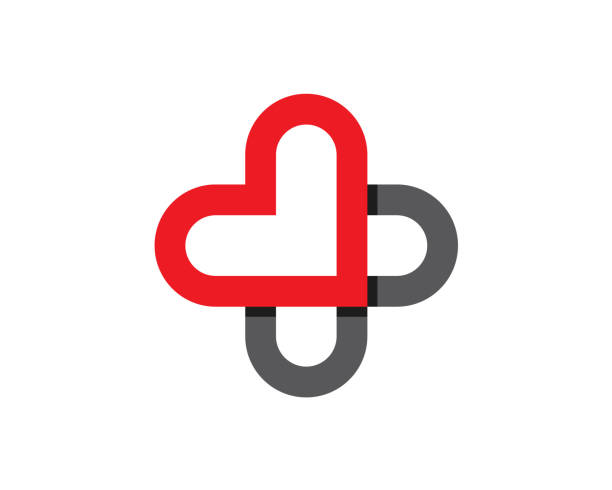
As lawmakers eye tougher oversight of pharmacy benefit managers, PBMs seem to be taking their own steps to rein in practices that have invited scrutiny. However, experts remain skeptical and say it won’t be enough.
The latest example comes from Evernorth, the health services division of Cigna that operates Express Scripts, one of the largest PBMs in the country. Last week, the company announced a new “rebate-free” pharmacy benefit model, in which the discounts the PBM negotiates with drug companies will be passed on directly to patients at the pharmacy counter. This compares to the post-purchase rebate model, in which partial refunds for prescriptions are provided to health plans or employers after a drug is dispensed, often on a quarterly basis.
“Our new model helps Americans get immediate lower prices up-front, while their employers and health plans see the impact in member satisfaction, better adherence and health outcomes, while improving trust in the health care system,” said Harold Carter, senior vice president of market development and pharma contracting at Express Scripts by Evernorth, in an email.
It’s not the first time a major PBM has touted new measures it says will bring down prescription costs. For example, Optum Rx announced in March that it is introducing a cost-plus prescription reimbursement model, in which they will reimburse pharmacies for the cost of acquisition for a drug plus a dispensing fee. CVS Caremark has also introduced a cost-plus model.
For one employer expert, Cigna’s new rebate-free model holds more promise than some of these other announcements from the Big Three PBMs, but he’s still skeptical.
“To do what they seem to be doing is going to require them to really fundamentally change the way in which they do business. And I take that as a sign of success for the many of us who have been advocating for and pushing for real reform in the PBM business model for a long time. … I would say [I’m skeptical] in that I don’t think Cigna/Express Scripts is going to do anything that will fundamentally alter their bottom line,” said Shawn Gremminger, president and CEO of the National Alliance of Healthcare Purchaser Coalitions.
A consultant noted that Cigna’s announcement seems to be an effort to prove to Congress that it’s self-regulating.
“I would say that Cigna has looked around and said, ‘We better take action to reform ourselves, or Congress is going to take action to reform us, and we’d rather do it ourselves.’ I don’t think that what they have done here is going to be enough to satisfy members of Congress,” said Michael Abrams, managing partner of Numerof & Associates.
Express Script’s model
There are three components to the new model, according to Cigna’s Carter.
- Providing negotiated discounts to patients at the counter when they are purchasing medications. This will become available for fully-insured lives in 2027 and all Evernorth pharmacy benefit clients in 2028.
- Leveraging technology to make sure patients pay the lowest available cost for brand-name and generic drugs, whether that’s a negotiated price, their copay or a cash discount price. Evernorth’s technology will automatically compare different pricing options and charge the lowest cost to patients at the pharmacy counter.
- Using a reimbursement model that compensates pharmacies based on the cost of medications in addition to a dispensing fee, plus additional reimbursement for clinical services they provide.
“Simply put, we are introducing this new model to help Americans stay healthy by meeting the demands of a rapidly evolving market. While pharmacy benefit managers, like Express Scripts, have already helped the U.S. achieve the lowest prices for generics in the world – which account for 90% of all prescriptions – the cost of brand-name medicines remain out of reach for too many Americans. … We believe now is the time to redesign pharmacy benefits to deliver lower costs to Americans and greater simplicity to employers and health plans,” Carter said.
While Gremminger is hopeful about this new rebate-free model, he questioned whether it’s actually just changing the definition of what a rebate is. He noted that traditionally, a drug company will pay a PBM a rebate to get their drug on the PBM’s formulary. The rebates are aggregated, and then employers get a lump sum of money for all their drugs over a certain period of time, typically a quarter. Then, that money can be used to reduce premiums.
“If it is actually just going to be an at-the-point-of-sale rebate or at-the-point-of-sale discount, that’s going to be good for people who are taking higher-priced drugs,” he said. “The net impact on the employer, if I’m thinking it through properly, stays the same. Whether it’s on the front end or on the back end, we’re getting a discount. But for the people who aren’t taking high-priced drugs and the employer no longer has money to buy down the premium, everybody’s premiums are gonna go up.”
It’s important to note that the post-purchase rebate model isn’t perfect, as what PBMs do with the rebates before passing them on to employers can be a bit of a “black box” and there is little employers can do to audit them, Gremminger added.
Abrams agreed that this is actually just redefining the definition of a rebate, as the manufacturers are still paying the PBMs for placement on their formulary. In fact, an investigation from the FTC found that the Big Three PBMs use restrictive drug formularies to exclude some drugs from coverage and demand high rebates from drug manufacturers to get their products on their formulary. The only thing that is changing is that the discount will go directly to patients at the counter.
“This is good PR, but maybe that’s all it is. The issue for me is [that] rebates feel wrong, because they’re coercive,” he said. “The manufacturer is being coerced into paying for the tier that they’d like to be in. The insured individual is being coerced into choosing from a limited set of medicines that may not include the lowest price option.”
Cigna also claimed that the new model will be able to reduce the monthly cost of brand-name prescriptions by an average of 30%. This will make it easy to assess whether this model is actually working, according to Gremminger. If the prices come down by 30% when it starts with the fully-insured population in 2027, then self-insured employers may actually opt for this option when it becomes available in 2028.
However, this claim that the new model will reduce prices by 30% raises some questions.
“For years, they claimed that the way that they were doing business was the most effective, lowest-cost way to buy drugs, and suddenly they changed the way they do business after significant pressure, and they say, ‘Oh, this is going to save you 30%.’ I’m like, ‘Cool. What have you been doing with that 30% for the last 10 years, which adds up to hundreds of billions of dollars?’” Gremminger said.
Will this be enough for lawmakers?
Although PBMs are seemingly taking their own steps to reform, there still needs to be federal action, according to Abrams. Specifically, he would like to see something done with the FTC’s investigation into PBMs. This investigation took place under the Biden administration, but has gone by the wayside during the Trump administration.
“I think the FTC needs to take action on what are clearly some anti-competitive activities here, when they have an agreement with a pharmaceutical manufacturer to leave generics or biologics off of the formulary,” he said. “That’s just wrong. That increases the cost of care, and they get compensated for doing so. … I’m surprised that having spent a year investigating the PBMs, that so little has been done with the information that they came back with.”
Gremminger also hopes to see further action from Congress.
“I have no doubt that the folks from Cigna and PCMA and others are up on Capitol Hill saying, ‘You don’t need to do anything. We’re self-regulating.’ I think that’d be a terrible mistake. I think it would be really smart for them to follow up and say, ‘Great. So glad you’re doing the right thing. We’re still going to go ahead and pass laws to make sure we’re holding them accountable,’” he said.
If he had a “magic wand,” he’d like to see legislation that requires PBMs to act as fiduciaries on behalf of health plans (in other words, they’d be obligated to act in the plan’s best financial interest). However, this likely won’t get passed in the near term, and he’d be happy with starting with legislation that brings more transparency to PBM practices.
Photo: z_wei, Getty Images





